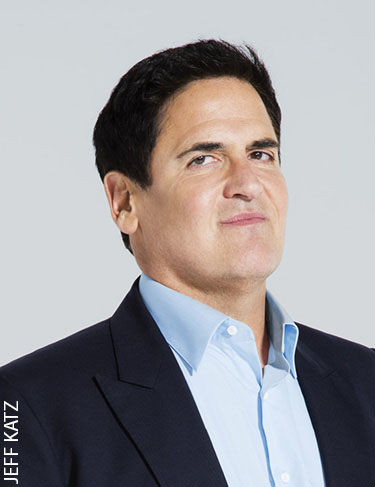
Investor: Mark Cuban
Shark Tank Appearance: March 16, 2012
Deal: $150,000 for a 30 percent stake
Results: Total sales increased from $100,000 to more than $25 million
When Stephan Aarstol appeared on the third season of Shark Tank to peddle his stand-up Tower Paddle Boards, the slide show he prepared hit a glitch. It jumped from the first slide to the last and a flummoxed Aarstol stammered, stumbled and then went silent for a full minute. Barbara Corcoran called Aarstol the worst presenter she’d seen in the history of the Emmy-winning business reality show. Mark Cuban saw something else. “I’m a business builder. I take small things and make them big things,” he said, having made his bid for a 30 percent stake for the online company. He later called it one of the best deals he ever made.
Related: Why Failure Is Good for Success
To catch up on what’s happened since, Aarstol spoke to SUCCESS from his office in San Diego.
Q As you’ve admitted, you’re famously known as delivering the worst pitch on Shark Tank that ever got a deal. How did you screw up so badly?
A: Shark Tank called me out of the blue during their second season. I hadn’t even heard of the show back then. Six weeks after that call, we taped my segment. I have a terrible memory so I was just worried about remembering the names of the Sharks. I had a pitch prepared but after the technical snafu, I blanked. It was even worse in real life than it was on the show.
Q What did you do with the $150,000 that Mark Cuban invested?
A: I had a loan for more than $100,000 that I needed to pay off. When I told Cuban that we did $60,000 in sales in just the four days after the show aired—this was a few months later—he asked me to cut him a dividend check for $50,000. He was right. You have to take care of your investors. Still, by selling 30 percent of my company for only $150,000, I felt I was basically giving away a chunk of the company for free.
But that $50,000 built a bridge of trust between Cuban and me. A year later, because we were growing so fast, he gave us a personal loan of $300,000. That was critical; we weren’t able to get bank financing until 2014.
Q Describe your relationship with Cuban.
A: Our contact is through email. He often responds in the middle of the night. That kind of asynchronous communication—meaning he answers on his schedule not when I reach out to him—is a very efficient use of his time and it’s a method that a lot of busy entrepreneurs use.
Cuban answers mostly in one-liners. In the early days when I was running things by him, I’d often get a response like “don’t do that” or “don’t be an idiot.” For example, when I considered renting boards through Groupon, he said, “Forget it. Those people will never buy. That’s not your customer.”
He was right about that, of course, but I soon changed my strategy. If I wanted to do something I went ahead, did it and informed Cuban after the fact. When I want guidance, I ask him. Ultimately I make the final call, but he has sick business instincts. For example, he came back from a family vacation once and sent me pictures of a full-face snorkel mask that kids were using. It’s like a big window and it gives you a 180-degree view of everything around you. When I first saw it, I thought, This thing is too goofy. But Cuban kept checking in on me, so we made it. The masks are actually easy to produce. We sold $30,000 worth in the first month. This year we’ll do $1 million in snorkel masks.
Q A couple of years ago you cut working hours for your company to 8 a.m. to 1 p.m. You even wrote a book called The Five-Hour Workday. How did that experiment work out?
A: It flopped, kind of. Our intent was to better retain employees by promoting productivity and giving people their lives back. Three out of the seven employees we had at the time ended up leaving. A weird thing happened—productivity was fine and we actually grew revenues—but the five-hour workday failed us in a completely unexpected way. People were feeling less connected to the company. When you’re working only 25 hours a week, other parts of your life become bigger and more important.
Especially in the startup world, people actually like going to work and feeling attached to or even consumed by their jobs. So now we’ve switched back to an eight-hour day for most of the year. We do five-hour days in the summer, during our busiest time of year, from June through September. The time pressure makes us figure out how to be more productive.
Q How has your own life changed since Shark Tank?
A: Surprisingly, not that much. We’re becoming a direct-to-consumer beach style brand, expanding our product line to include sunglasses, beach chairs, bikes, skateboards. We want everything that’s beach related to be under the Tower umbrella. It’s going great. The reality is that although we’re growing the business, everything we earn goes back into inventory. I even had a roommate until a year ago.
Related: 5 Tips for Running a Successful Business
This article originally appeared in the May 2017 issue of SUCCESS magazine.




